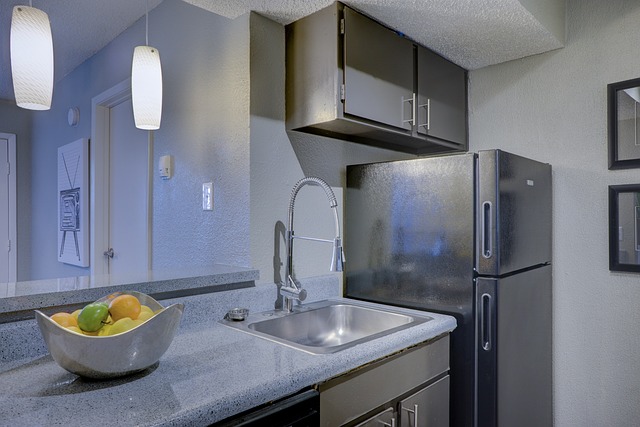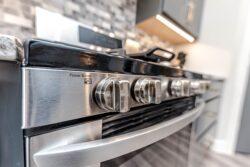
Welcome to the comprehensive guide on “Commercial Kitchen Exhaust Cleaning: Fire Safety and Maintenance.” In this journey, we delve into the intricate world of commercial kitchen exhausts, unraveling the importance of regular cleaning, understanding fire risks, and exploring maintenance practices that ensure a safe and efficient kitchen environment. Every bustling restaurant has a kitchen exhaust system, a critical element that is often overlooked. Beyond its role in maintaining air quality, the exhaust system is a silent guardian against a significant threat: fire.
See also our post on Going Green in the Kitchen: Sustainable Cleaning for Appliances
The Crucial Role of Kitchen Exhausts
1. Removal of Grease and Smoke
The primary function of a kitchen exhaust system is to remove grease, smoke, and cooking odors produced during food preparation. This not only maintains a comfortable environment for kitchen staff but also contributes to a pleasant dining atmosphere.
2. Fire Prevention
A well-maintained kitchen exhaust system plays a pivotal role in fire prevention. Grease buildup within the exhaust ducts poses a significant fire risk, making regular cleaning an essential practice to mitigate potential hazards.
3. Air Quality Regulation
Kitchen exhausts contribute to regulating indoor air quality. Efficient removal of cooking byproducts ensures a healthier environment for both kitchen staff and patrons, minimizing the risk of respiratory issues.
4. Compliance with Regulations
Adhering to local and national regulations is crucial for commercial kitchens. Many jurisdictions have specific requirements for exhaust system maintenance to ensure fire safety and compliance with health and safety standards.
5. Prolonging Equipment Life
Regular cleaning and maintenance of the kitchen exhaust system contribute to the longevity of equipment. This practice prevents corrosion and deterioration, extending the lifespan of exhaust fans, ductwork, and other components.
See also our post on How to Clean and Maintain Your Kitchen Pantry: A Foodie’s Dream
Fire Risks in Commercial Kitchens
Grease Accumulation
One of the primary fire risks in commercial kitchens is the accumulation of grease. Over time, grease can build up within exhaust ducts, creating a highly flammable environment that poses a severe threat of ignition.
High Temperatures
Commercial kitchens operate at high temperatures during cooking. The combination of heat and grease creates an environment conducive to fire, especially if the exhaust system is not adequately cleaned and maintained.
Ignition Sources
Various ignition sources exist in kitchens, including open flames, electrical appliances, and hot surfaces. When combined with accumulated grease, these sources can trigger a fire within the exhaust system.
Rapid Fire Spread
Once ignited, a grease fire in the exhaust system can spread rapidly. The confined space of ductwork provides an ideal pathway for fire to travel, posing a significant challenge for containment.
Structural Damage
In addition to the immediate fire risk, uncontrolled grease fires can cause structural damage to the kitchen exhaust system, including ductwork, exhaust fans, and hoods, leading to costly repairs and downtime.
The Importance of Regular Cleaning
Preventing Fire Hazards
Regular cleaning is the most effective measure to prevent fire hazards in commercial kitchens. Thorough cleaning of exhaust hoods, ducts, and fans removes grease buildup, reducing the risk of ignition.
Ensuring Compliance
Regular cleaning ensures compliance with local fire and safety regulations. Many jurisdictions mandate specific cleaning frequencies for commercial kitchen exhaust systems to maintain a safe working environment.
Improving System Efficiency
A clean exhaust system operates more efficiently. Proper airflow is crucial for removing cooking byproducts, and regular cleaning prevents blockages that can hinder the system’s performance.
Enhancing Airflow
Maintaining optimal airflow contributes to the comfort of kitchen staff. A well-functioning exhaust system effectively removes heat, smoke, and odors, creating a more pleasant working environment.
Extending Equipment Lifespan
Regular cleaning extends the lifespan of exhaust system components. By preventing corrosion and deterioration, cleaning helps avoid premature wear and the need for costly replacements.
See also our post on Restaurant Kitchen Cleaning: Maintaining Hygiene Standards
Signs that Cleaning is Required
Visible Grease Buildup
Visible grease buildup on exhaust hoods, ducts, or fans is a clear indicator that cleaning is required. The presence of grease on surfaces is not only unsightly but also a potential fire risk.
Persistent Cooking Odors
If persistent cooking odors linger in the kitchen, it may indicate inadequate ventilation. Cleaning the exhaust system can help eliminate odors and improve the overall air quality.
Decreased Airflow
A noticeable decrease in airflow from the exhaust system suggests potential blockages. Regular cleaning is essential to remove obstructions and ensure the system operates at its optimal capacity.
Unusual Noises
Unusual noises from the exhaust fan may indicate mechanical issues or imbalances caused by grease buildup. Cleaning and lubricating fan components can resolve these problems.
Increased Energy Consumption
A sudden increase in energy consumption by the exhaust system may signal inefficiency. Cleaning can restore the system’s efficiency, reducing energy costs and promoting sustainability.
The Commercial Kitchen Exhaust Cleaning Process
Initial Inspection
Before cleaning, conduct a thorough inspection of the exhaust system. Identify areas with visible grease buildup, blockages, or mechanical issues that require attention.
Preparation of Work Area
Preparation is key to a successful cleaning process. Cover and protect kitchen equipment, surfaces, and flooring to prevent the spread of grease and cleaning agents.
Degreasing and Cleaning Agents
Select appropriate degreasing and cleaning agents. These should effectively break down and remove grease without causing damage to the exhaust system components.
Manual Scrubbing
Manual scrubbing is often necessary to dislodge stubborn grease deposits. Use brushes, scrapers, or other appropriate tools to reach and clean areas that may be challenging for automated methods.
Pressure Washing
Pressure washing is a powerful method to remove grease and debris from exhaust hoods, ducts, and fans. This process ensures a thorough cleaning and restores the surfaces to their optimal condition.
Professional Cleaning Services
Expertise and Experience
Engaging professional cleaning services provides access to expertise and experience in commercial kitchen exhaust cleaning. Trained professionals understand the intricacies of exhaust systems and ensure thorough cleaning.
Compliance with Regulations
Professional services are well-versed in local regulations governing kitchen exhaust cleaning. By hiring experts, businesses can ensure compliance with safety standards and avoid potential legal issues.
Comprehensive Cleaning
Professional cleaning services offer comprehensive solutions. They go beyond surface cleaning and address hidden areas, ensuring that the entire exhaust system is free from grease buildup.
Time and Cost Efficiency
Outsourcing cleaning to professionals is time and cost-efficient. Trained teams can complete the cleaning process swiftly and effectively, minimizing disruption to kitchen operations.
Scheduled Maintenance Programs
Many professional cleaning services offer scheduled maintenance programs. These programs provide regular cleaning at predetermined intervals, ensuring consistent fire safety and system efficiency.
Prevention and Maintenance Tips
Regular Inspections
Conduct regular inspections of the exhaust system to identify any signs of grease buildup, blockages, or mechanical issues. Early detection allows for prompt maintenance.
Scheduled Cleanings
Establish a schedule for routine cleanings based on the specific needs of the kitchen. Adhering to a consistent cleaning schedule prevents the accumulation of grease and reduces fire risks.
Employee Training
Train kitchen staff on the importance of proper cooking practices and the impact on the exhaust system. Educated staff can contribute to maintaining a cleaner and safer kitchen environment.
Use of Grease Traps
Install and regularly clean grease traps to capture grease before it enters the exhaust system. This additional measure helps prevent excessive grease buildup.
Invest in Quality Equipment
Choose high-quality exhaust system components. Investing in reliable equipment reduces the likelihood of malfunctions and contributes to the overall efficiency and safety of the kitchen.
See also our post on Zero-Waste Kitchen Cleaning: Sustainable Solutions for Spills and Stains
Conclusion
In summary, “Commercial Kitchen Exhaust Cleaning: Fire Safety and Maintenance” delves beyond the routine to explore the critical elements of fire prevention, the importance of regular cleaning, signs that cleaning is required, the cleaning process, professional services, and prevention tips.
This guide is an invitation to strengthen the heart of any commercial kitchen against the silent threat of fire, from comprehending the risks posed by grease accumulation to putting scheduled maintenance programs into place. By embracing the art of keeping the kitchen clean and safe, we open the door to a culinary adventure where fire safety and effective maintenance take center stage, guaranteeing not only the satisfaction of diners but the security of all those who contribute to the savory symphony in the heart of the kitchen.







